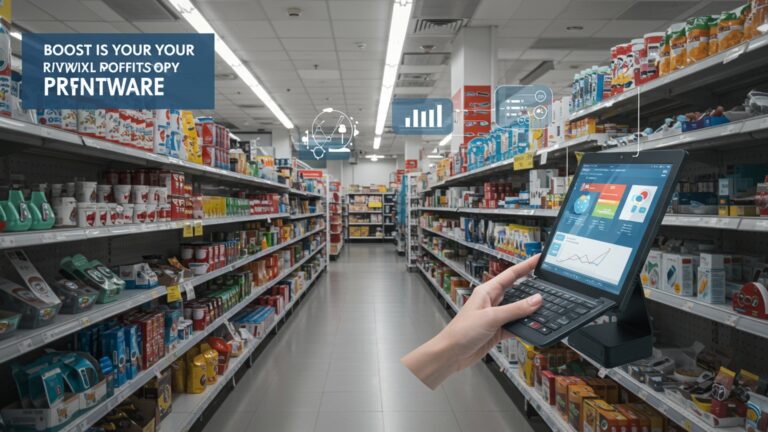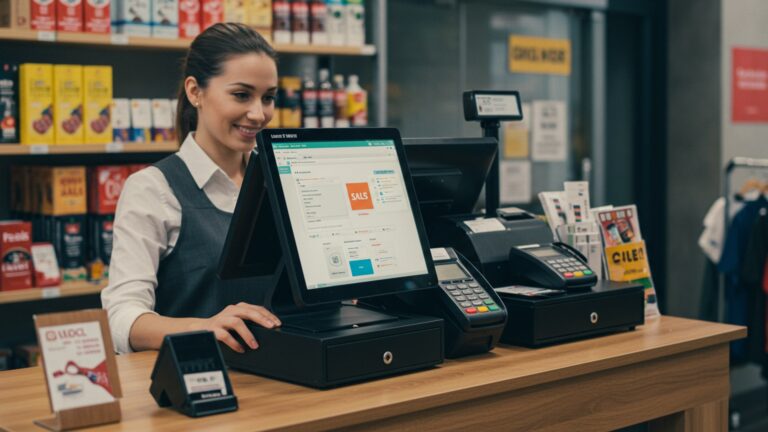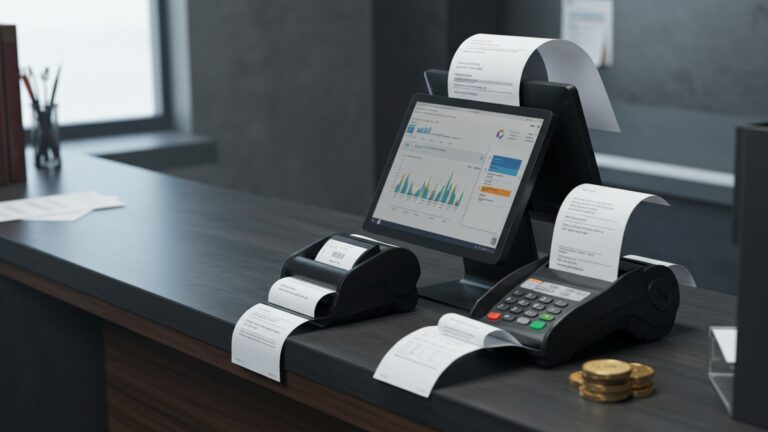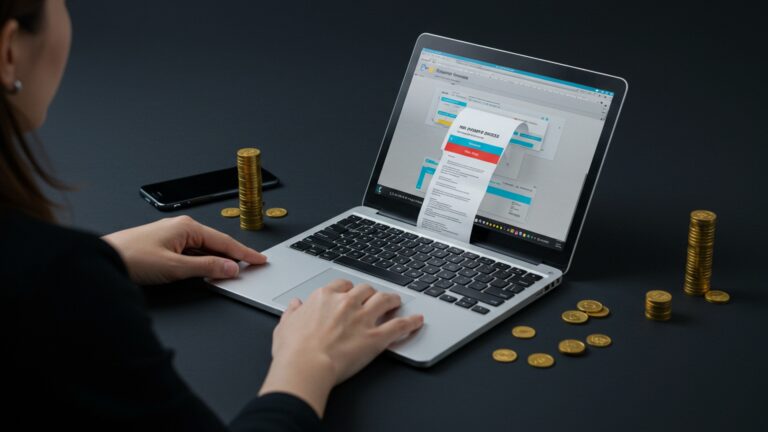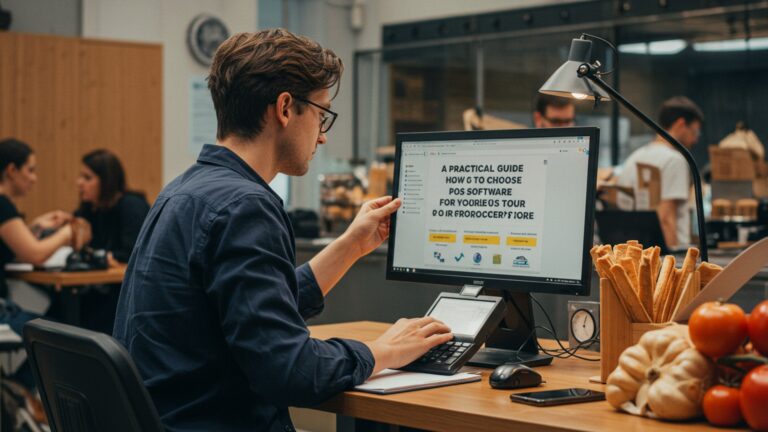How to Master POS Software for Seamless Grocery Store Operations
In today’s hyper-competitive grocery landscape, operational efficiency and insightful data drive profitability, rendering outdated manual processes obsolete. Modern pos software for grocery store environments now serve as the central nervous system, orchestrating complex operations from real-time inventory adjustments and dynamic pricing to seamless self-checkout and integrated loyalty programs. These advanced systems, often incorporating AI for predictive analytics and loss prevention, transform raw transaction data into actionable intelligence, enabling grocers to proactively manage supply chains, minimize shrink. personalize customer experiences. Mastering these powerful platforms is no longer merely about processing sales; it’s about leveraging cutting-edge technology to navigate fluctuating market demands and ensure every department, from produce to deli, operates with peak efficiency and profitability.

Understanding POS Software: More Than Just a Cash Register
In the fast-paced world of grocery retail, efficiency and accuracy are paramount. Gone are the days when a simple cash register sufficed for managing daily transactions. Today, a sophisticated system known as Point of Sale (POS) software has become the backbone of successful grocery store operations. Far beyond merely ringing up sales, modern pos software for grocery store environments acts as a comprehensive management hub, integrating various critical functions into a single, cohesive platform.
At its core, POS software is the system where your customer makes a payment for products or services at your store. But for a grocery store, its capabilities extend dramatically. It processes sales, manages inventory, tracks customer data. generates vital reports. Imagine a central nervous system for your store: every sale, every return, every inventory adjustment. every customer interaction flows through this system. This level of integration is what transforms a basic transaction point into a powerful tool for operational excellence and strategic growth.
Core Features of Essential POS Software for Grocery Stores
To truly master your grocery store operations, understanding the specific features that make pos software for grocery store so indispensable is key. These functionalities are designed to address the unique challenges and demands of a high-volume, diverse inventory retail environment.
- Inventory Management
- Sales & Transaction Processing
- Customer Relationship Management (CRM)
- Reporting & Analytics
- Employee Management
- Scalability & Integration
This is arguably the most critical feature for a grocery store. It provides real-time tracking of every product, from fresh produce to canned goods. Features include automated stock alerts, vendor management, purchase order generation. the ability to track batch numbers and expiration dates for perishable items.
High-speed checkout is a must. The software facilitates quick barcode scanning, item lookup. supports various payment methods including credit/debit cards, mobile payments, EBT. gift cards. It also handles returns, refunds. exchanges seamlessly.
Build customer loyalty with integrated programs. Track purchase history to offer personalized promotions, manage loyalty points. gather valuable customer data to comprehend buying patterns.
Gain deep insights into your business performance. Generate detailed reports on sales trends, popular products, peak shopping hours, staff performance. profit margins. This data is invaluable for informed decision-making.
Simplify staff scheduling, track clock-ins and outs, manage different access permissions. monitor individual sales performance. This helps in optimizing labor costs and improving productivity.
A good POS system should grow with your business. It should also integrate smoothly with other essential tools like accounting software (e. g. , QuickBooks), e-commerce platforms. specialized grocery hardware like deli scales or produce scanners.
Choosing the Right POS Software for Your Grocery Store: Key Considerations
Selecting the ideal pos software for grocery store operations is a strategic decision that can significantly impact your bottom line and customer satisfaction. It’s not a one-size-fits-all solution. careful consideration of several factors is crucial.
- Identify Your Specific Needs
- Cloud-based vs. On-premise
Consider your store’s size, the volume and type of products you sell (e. g. , extensive fresh produce, bulk items, specialty goods). your budget. Do you need robust loyalty programs? Multiple store locations?
This is a fundamental choice.
| Feature | Cloud-based POS | On-premise POS |
|---|---|---|
| Accessibility | Access data from anywhere with an internet connection. | Data stored locally; access typically limited to the store network. |
| Cost Structure | Subscription-based (monthly/annually), lower upfront cost. | Higher upfront cost for software and hardware; one-time license. |
| Maintenance & Updates | Vendor handles updates and maintenance automatically. | Requires internal IT staff or third-party to manage updates and maintenance. |
| Data Security | Managed by vendor with professional data centers and encryption. | Your responsibility to manage backups and security protocols. |
| Scalability | Easily scales up or down based on business needs. | Can be more challenging and costly to scale. |
- Hardware Compatibility
- Vendor Support & Training
- Security Features
- Total Cost of Ownership
Ensure the software integrates seamlessly with your existing or planned hardware, including barcode scanners, receipt printers, cash drawers, customer displays. specialized grocery equipment like weight scales and payment terminals.
Excellent customer support is non-negotiable. Look for vendors offering 24/7 support, comprehensive training resources. clear service level agreements.
Protecting sensitive customer data and financial details is paramount. The system must be PCI compliant and offer robust data encryption and user access controls.
Beyond the initial purchase, factor in ongoing subscription fees, maintenance costs, hardware upgrades. potential training expenses.
Mastering Inventory Management: The Heartbeat of Grocery Operations
For a grocery store, inventory is not just stock; it’s fresh produce with limited shelf life, seasonal demand fluctuations. a constant battle against waste. This is where mastering your pos software for grocery store truly shines. Effective inventory management directly impacts profitability by minimizing spoilage, preventing stockouts. optimizing purchasing.
Consider a medium-sized grocery store that struggled with managing its fresh produce. Before implementing a robust POS system, they relied on manual checks and spreadsheets, leading to frequent overstocking of certain items and shortages of others. After integrating a new system, they leveraged features like:
- Real-time Tracking
- Automated Reordering
- Expiration Date Tracking
Every sale automatically updates inventory counts.
Setting minimum stock levels triggers automatic purchase order suggestions to vendors.
The system alerts staff to items nearing their expiration, allowing for proactive promotions or rotation, significantly reducing waste. For instance, staff can pull a report daily for items expiring in the next 3 days:
SELECT FROM Inventory WHERE ExpirationDate BETWEEN GETDATE() AND DATEADD(day, 3, GETDATE());
(Note: Actual query syntax varies by POS system database, this is a conceptual example.)
Streamlining communication and orders with multiple suppliers.
By implementing these features, the store reduced produce waste by 15% within six months and saw a 10% increase in customer satisfaction due to fewer out-of-stock items. Actionable takeaway: Regularly audit your inventory data against physical counts to ensure accuracy and leverage predictive analytics features if available to anticipate demand fluctuations.
Streamlining Checkout: Enhancing Customer Experience and Efficiency
The checkout experience is the final impression a customer has of your grocery store. often, it’s a bottleneck. Mastering your pos software for grocery store here means transforming a potential pain point into a smooth, efficient. even pleasant interaction. Speed and accuracy are paramount.
- Rapid Barcode Scanning
- Efficient Item Lookup
- Flexible Payment Options
- Promotions and Loyalty Integration
- Self-Checkout Integration
Ensure your POS system and scanners are optimized for quick, accurate reads, even on slightly damaged labels. Training staff to use two-hand scanning techniques can shave seconds off each transaction.
For items without barcodes (like fresh produce), the system should offer intuitive search functions, often with images or quick keys, to minimize delays.
Beyond traditional credit/debit, integrate mobile payment solutions (Apple Pay, Google Pay), EBT, gift cards. even contactless payments. This caters to diverse customer preferences and speeds up transactions.
The system should automatically apply discounts, coupons. loyalty points at the point of sale, preventing manual errors and ensuring customers receive their due benefits without delay.
For stores implementing self-checkout lanes, the POS software needs robust integration to manage these stations, handle exceptions (e. g. , age verification for alcohol). provide clear instructions to customers.
A grocery chain reported a 20% reduction in average transaction time after upgrading their POS system and providing extensive staff training focused on efficient checkout procedures. This led to shorter lines, improved customer satisfaction. increased throughput during peak hours.
Leveraging Data & Analytics for Strategic Growth
The true power of modern pos software for grocery store lies in the data it collects. Every transaction, every inventory movement, every customer interaction generates valuable insights. Mastering this data is essential for making informed strategic decisions that drive growth and profitability.
- Interpreting Sales Reports
- Understanding Customer Buying Patterns
- Optimizing Staff Performance
- Anticipating Seasonal Trends
Don’t just look at total sales. Dive into reports on sales by product category, individual item performance, time of day. day of the week. Identify your best-sellers to ensure adequate stock and discover slow-movers that might need promotions or removal.
Use CRM data to assess what products customers buy together, how frequently they shop. their preferred categories. This informs personalized marketing campaigns and store layout decisions. For example, if data shows that customers frequently buy fresh bread with artisanal cheeses, positioning them closer together could boost impulse purchases.
Track sales per employee, average transaction value. checkout speed. This data helps identify top performers, areas for additional training. assists in optimizing staffing schedules to match peak demand.
By analyzing historical sales data, you can predict seasonal demand for items like holiday turkeys, summer BBQ essentials, or back-to-school snacks. This allows for proactive purchasing and marketing, preventing both overstocking and stockouts.
A regional grocery store chain used its POS data to identify a significant dip in sales for organic produce on Tuesday afternoons. By analyzing the data further, they realized their main organic produce delivery arrived late on Tuesdays, leading to less fresh stock. Adjusting the delivery schedule based on this data led to a 10% increase in organic produce sales on Tuesdays and Wednesdays.
Training Your Team: The Human Element in POS Mastery
Even the most advanced pos software for grocery store is only as effective as the people using it. Comprehensive and ongoing staff training is not an option; it’s a critical investment. Empowering your team to confidently and efficiently use the POS system ensures seamless operations and a positive customer experience.
- Develop a Structured Training Program
- Hands-On Practice
- Role-Specific Training
- Ongoing Support and Refreshers
- Empower Problem-Solving
Don’t just show them once. Create a step-by-step training manual or video series covering all essential functions: processing sales, handling returns, applying discounts, managing loyalty points. troubleshooting basic errors.
Provide a dedicated training mode or a non-live system where new employees can practice without affecting real transactions. Repetition builds confidence and muscle memory.
Cashiers, inventory managers. store managers will have different levels of access and different primary functions. Tailor training to their specific roles. For instance, inventory staff need to comprehend receiving and stock adjustments, while cashiers focus on transaction processing.
Technology evolves. so should your training. Schedule regular refresher sessions, especially after software updates or the introduction of new features. Create a quick-reference guide for common issues.
Teach staff how to identify common errors and what steps to take before escalating to a manager. This reduces bottlenecks and speeds up issue resolution. For example, understanding how to void an incorrect item or re-scan a stubborn barcode.
A grocery store manager shared that initial resistance to a new POS system quickly turned into enthusiasm after a focused, two-week training program that included daily practice sessions and a dedicated “POS guru” on staff to answer questions. This commitment to training resulted in faster checkout times and fewer customer complaints related to transaction errors.
Troubleshooting Common POS Issues & Best Practices
Even with the best training and software, occasional technical glitches can occur. Knowing how to troubleshoot common issues and adopting best practices for your pos software for grocery store can minimize downtime and maintain operational flow.
- Connectivity Problems
- Internet Connection
- Hardware Connectivity
- Software Glitches & Updates
- Restart Software/System
- Regular Updates
- Data Backup and Recovery
- Automated Backups
- Disaster Recovery Plan
- Hardware Maintenance
- Cleanliness
- Supplies
- Proactive Monitoring
- Regularly review system logs for errors or unusual activity.
- Perform routine checks of hardware functionality before opening.
- Establish a clear communication channel for staff to report issues promptly.
Most modern POS systems rely on a stable internet connection. If the system is slow or unresponsive, check your Wi-Fi or Ethernet connection first. Consider having a backup internet solution (e. g. , mobile hotspot) for critical periods.
Ensure all peripherals (scanners, printers, payment terminals) are properly plugged in and powered on. Rebooting them can often resolve communication issues.
A simple restart of the POS application or the entire terminal can resolve many minor bugs.
Keep your software updated to the latest version. Updates often include bug fixes, security patches. new features. Schedule updates during off-peak hours to minimize disruption.
Ensure your POS system is configured for regular, automated data backups, especially if it’s an on-premise solution. Cloud-based systems typically handle this automatically. it’s good to confirm.
Have a plan in place for data recovery in case of system failure or data loss.
Regularly clean barcode scanners, touchscreens. receipt printer heads to prevent dust and debris from causing malfunctions.
Always have spare receipt paper rolls, ink/toner (if applicable). backup batteries for wireless devices.
Conclusion
Mastering your grocery store’s POS software isn’t just about efficiency; it’s about building a foundation for growth and superior customer experiences. A crucial first step is continuous staff training, ensuring every team member, from the cashier managing peak-hour queues to the inventory specialist updating stock, is proficient. I’ve personally observed that stores investing in this foundational knowledge see checkout times significantly drop, enhancing customer satisfaction immediately. Beyond basic transactions, truly leverage your POS to embrace current retail trends. Think about integrating online order fulfillment via click-and-collect, or seamlessly managing loyalty programs and self-checkout kiosks, which are becoming standard expectations. My unique insight, drawn from watching countless transactions, is that the real power lies in harnessing the real-time data for proactive inventory management and personalized customer engagement, like understanding which organic produce sells fastest on weekends. Ultimately, your POS is more than a billing machine; it’s the nerve center of your operations. Embrace its full potential, staying updated with its features and how they can streamline your workflow, minimize discrepancies. enrich the customer journey. By doing so, you’re not just running a grocery store; you’re cultivating a thriving, future-ready business poised for enduring success.
More Articles
How to Optimize Inventory Management POS India for Profit Growth
How to Select the Best Billing and POS Software for Your Business
How to Implement POS Software for Seamless Sales and Inventory Management
Learn 8 Proactive Steps to Minimize Billing Discrepancies Effectively
FAQs
I just got a new POS system for my grocery store. Where do I even start to master it?
Begin with the basics: learn how to process a simple sale, void an item. handle different payment types. Most systems offer tutorials or user manuals. Focus on the core functions your staff will use daily before diving into advanced features.
How can I get my team up to speed quickly and ensure they use the POS correctly?
Hands-on training is key. Conduct dedicated sessions, create simple cheat sheets for common tasks. encourage practice. Assign a ‘POS champion’ who can answer questions on the spot. Regular refreshers and positive reinforcement also help.
What are the most common mistakes grocery stores make with POS software. how can I avoid them?
Frequent errors include incorrect item scanning (leading to wrong prices), mismanaging inventory. slow transaction processing. Avoid these by ensuring all products have scannable barcodes, regularly updating inventory. training staff on efficient checkout procedures.
Can POS software really help me keep better track of my grocery store’s inventory?
Absolutely! A well-mastered POS system is an inventory powerhouse. It tracks sales in real-time, helps you monitor stock levels, identifies fast-moving vs. slow-moving items. can even automate reorder alerts, significantly reducing spoilage and stockouts.
How do I efficiently manage price changes or add new products to the system without causing delays?
Look for features that allow for bulk updates or quick item creation. Many POS systems let you import product lists via spreadsheets or update prices across categories simultaneously. Regular maintenance and pre-planning for new product launches are crucial.
Is it worth the time and effort to truly master every feature of my grocery store’s POS?
Definitely! Mastering your POS goes beyond just ringing up sales. It unlocks powerful reporting, optimizes inventory, speeds up checkout times. improves customer satisfaction. The efficiency gains and data insights will directly impact your store’s profitability and operational smoothness.
What should I do if my POS system goes down during a busy weekend rush?
Have a backup plan ready. This could involve a manual transaction process (like pen and paper with a calculator) for essential sales, or a temporary offline mode if your system supports it. Ensure your data is regularly backed up and you know how to contact support quickly.

